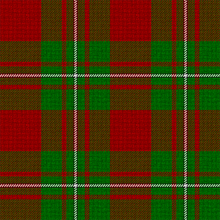
Les Fusiliers Mont-Royal is a Primary Reserve infantry regiment of the Canadian Army.

The Calgary Highlanders is a Canadian Army Primary Reserve infantry regiment, headquartered at Mewata Armouries in Calgary, Alberta, Canada. The regiment is a part-time reserve unit, under the command of 41 Canadian Brigade Group, itself part of 3rd Canadian Division, one of four region-based Canadian Army divisions. The regiment is one of only two regiments in the Canadian Forces to wear an honorary distinction on their uniform, commemorating the counterattack at Kitcheners' Wood. On 9 January 2015, the regiment was recognized with the Canadian Forces' Unit Commendation for outstanding contributions to the war in Afghanistan.

The Royal Hamilton Light Infantry (Wentworth Regiment) (RHLI) is a Primary Reserve infantry regiment of the Canadian Army, based at John Weir Foote VC Armoury in Hamilton, Ontario. The RHLI is part of 31 Canadian Brigade Group, which is part of 4th Canadian Division.

The Royal New Brunswick Regiment (RNBR) is a reserve infantry regiment of the Canadian Army based in New Brunswick. The Royal New Brunswick Regiment is part of 37 Canadian Brigade Group, 5th Canadian Division. The RNBR holds 65 battle honours.

The Nova Scotia Highlanders is an infantry regiment in the primary reserve of the Canadian Army. It is part of 36 Canadian Brigade Group, 5th Canadian Division.

The Toronto Scottish Regiment (Queen Elizabeth The Queen Mother's Own) is a Primary Reserve infantry regiment of the Canadian Army. It is part of 4th Canadian Division's 32 Canadian Brigade Group.
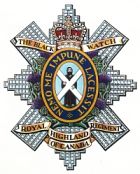
The Black Watch of Canada is a reserve infantry regiment in 34 Canadian Brigade Group, 2nd Canadian Division, of the Canadian Army. The regiment is located at 2067, rue Bleury in Montreal, Quebec, Canada, and is currently commanded by Lieutenant-Colonel R.M. Unger, MMM,CD. The regiment's armoury was designated a National Historic Site of Canada in 2008. They are the senior Canadian-Scottish Regiment.

The Royal Highland Fusiliers of Canada is a Primary Reserve light infantry regiment of the Canadian Army, with companies in Cambridge and Kitchener, and is an infantry sub-unit of 31 Canadian Brigade Group, headquartered in London, Ontario. The Princess Margaret, Countess of Snowdon and The Prince Andrew, Duke of York, as members of the Canadian Royal Family, acted as Colonel-in-Chief.
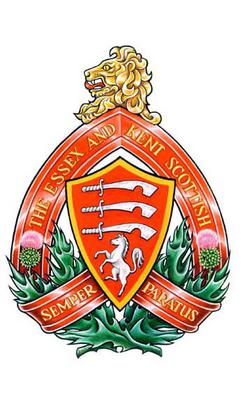
The Essex and Kent Scottish is a Primary Reserve infantry regiment of the Canadian Army.
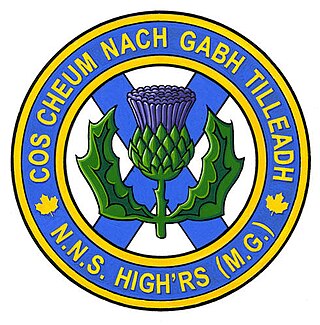
The North Nova Scotia Highlanders was an infantry regiment of the Canadian Army founded in 1936. In 1954, it was amalgamated with The Pictou Highlanders and 189 LAA RCA Battery to form 1st Battalion, The Nova Scotia Highlanders (North).
The Pictou Highlanders was an infantry regiment of the Canadian Army from 1871 until it was amalgamated into the Nova Scotia Highlanders in 1954.
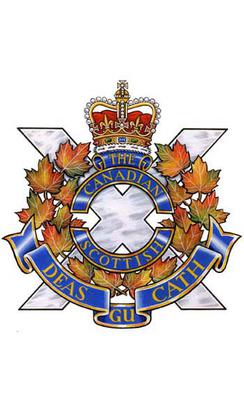
The Canadian Scottish Regiment (Princess Mary's) is a Primary Reserve infantry regiment of the Canadian Army based on Vancouver Island in British Columbia.
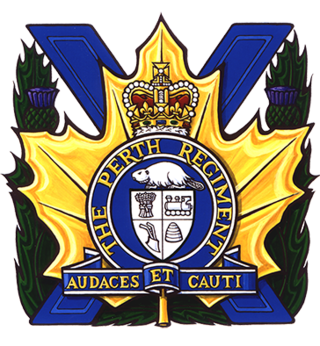
The Perth Regiment was an infantry regiment of the Canadian Army. It is currently on the Supplementary Order of Battle.

The Highland Light Infantry of Canada was an infantry regiment of the Canadian Army. In 1965, the regiment was amalgamated with The Scots Fusiliers of Canada to form The Highland Fusiliers of Canada.
The New Brunswick Scottish was an infantry regiment of the Canadian Army.
The Prince Edward Island Highlanders was an infantry regiment of the Canadian Army. In 1946, the regiment was amalgamated with The Prince Edward Island Light Horse to form The Prince Edward Island Regiment (RCAC).
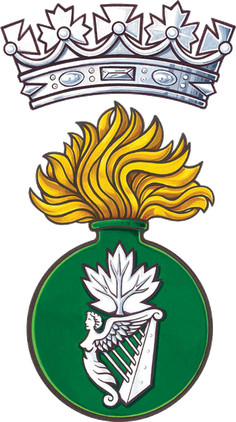
The Irish Fusiliers of Canada (The Vancouver Regiment) was an infantry regiment of the Canadian Army. It was placed on the Supplementary Order of Battle in 1965. In 2002, it was taken off the Supplementary Order of Battle and amalgamated with The British Columbia Regiment (Duke of Connaught's Own).
The 42nd Field Artillery Regiment, RCA is a Canadian Army Reserve artillery regiment based in Pembroke, Ontario. It is part of the 4th Canadian Division's 33 Canadian Brigade Group.
The Scots Fusiliers of Canada was an infantry regiment of the Non-Permanent Active Militia of the Canadian Militia. In 1965, the regiment was amalgamated with the Highland Light Infantry of Canada to form The Highland Fusiliers of Canada.
The Argyll Light Infantry was an infantry regiment of the Non-Permanent Active Militia of the Canadian Militia. In 1936, the regiment was converted from infantry to form one of the Canadian Army's first tank units, and then in 1946 was converted to anti-tank artillery. In 1954, the regiment was converted back to infantry and amalgamated along with The Midland Regiment into The Hastings and Prince Edward Regiment.
